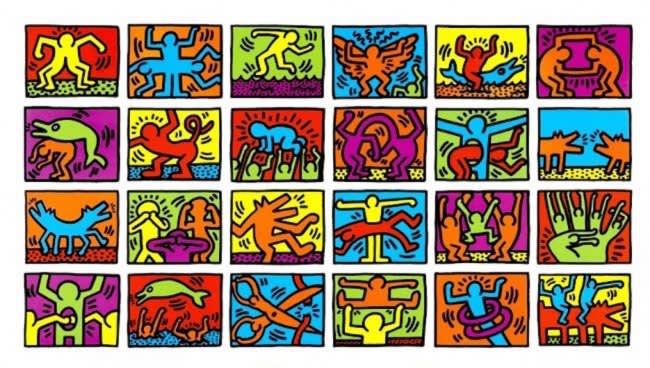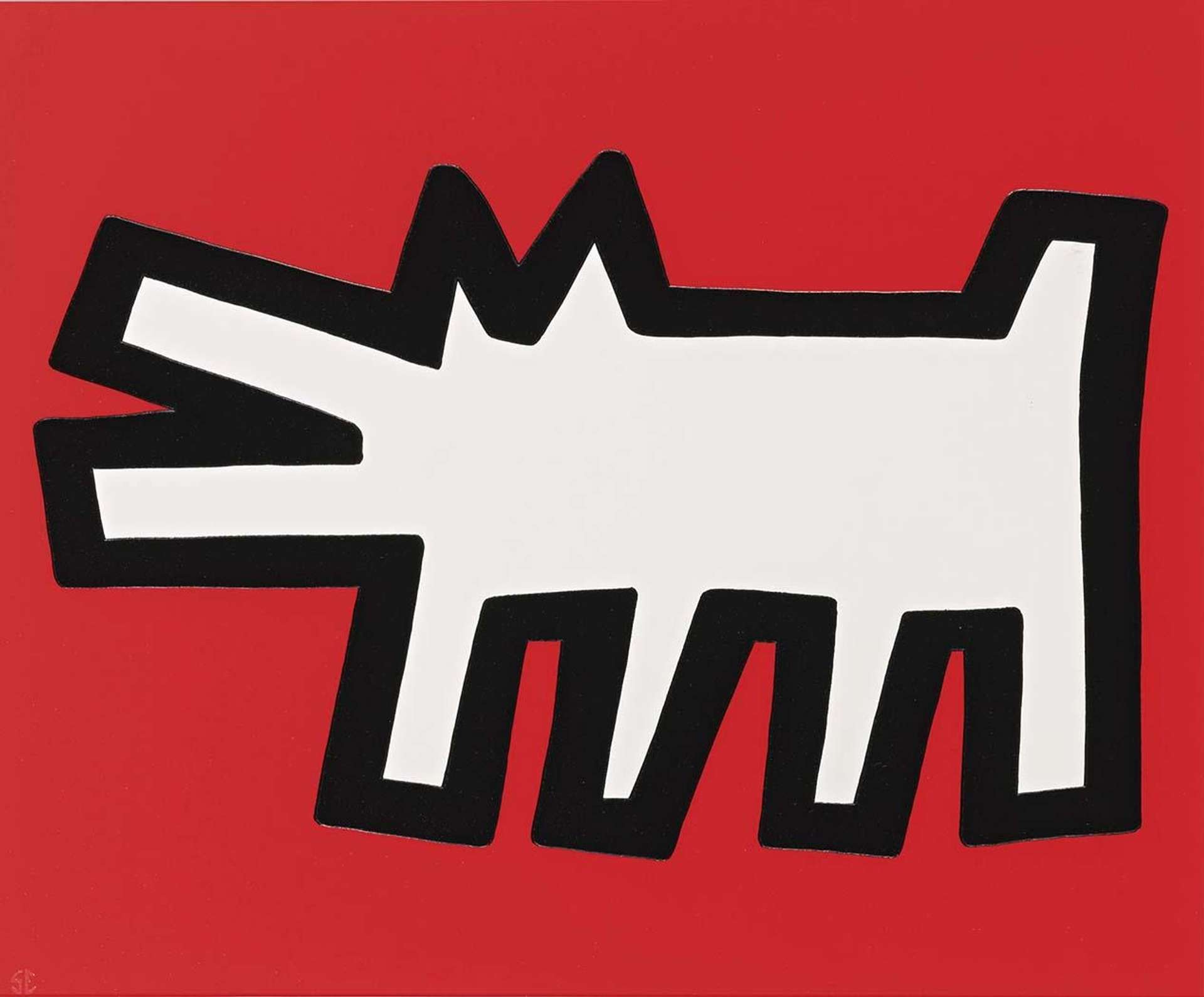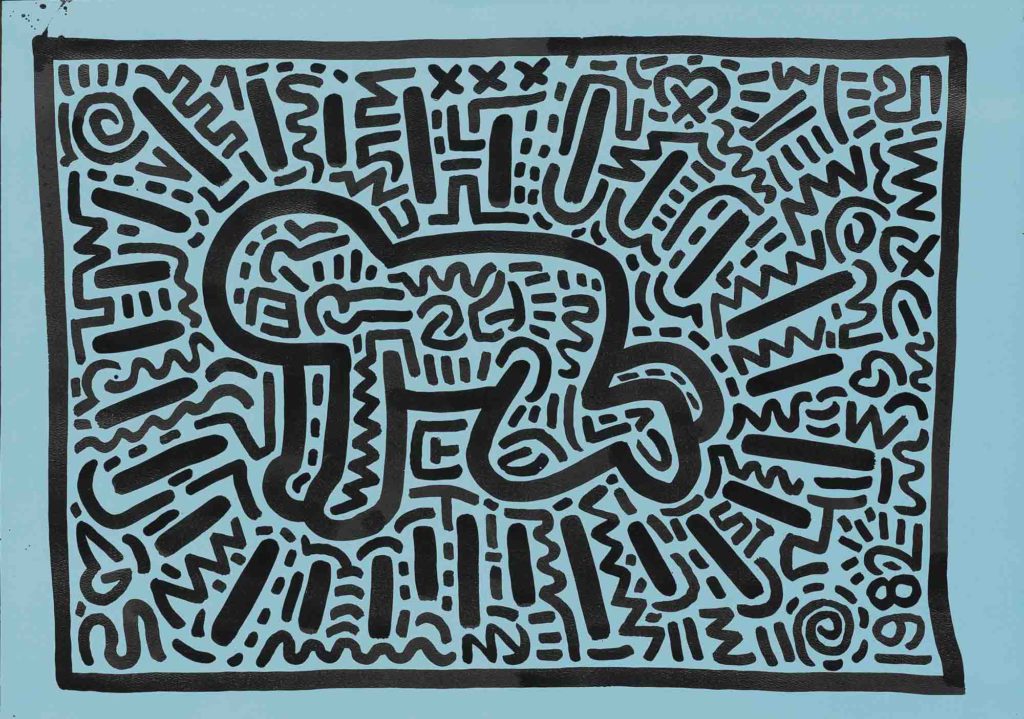
Spaceships: A Cosmic Connection
Keith Haring's fascination with spaceships can be traced back to his childhood interest in science fiction and the unknown. These otherworldly vessels, often rendered as simplistic, triangular shapes with radiating lines, became a recurring theme in his work. Haring used spaceships as a metaphor for escapism, freedom, and exploration. They symbolised a departure from the mundane, a journey to new realms of possibility, much like the artistic journey Haring embarked upon in the bustling streets of New York City.

Dogs: Loyalty and Playfulness
Haring's iconic dog figures are immediately recognizable with their wagging tails and joyful demeanour. These playful canine companions are a nod to Haring's own pet dog, but they also carry deeper symbolism. The dog, in Haring's work, represents loyalty, innocence, and the innate goodness of humanity. In the bustling urban landscape of 1980s New York, Haring saw the need for a return to these fundamental qualities, and his dogs served as a reminder of our shared humanity.

Human Figures: Social Commentary
At the heart of Keith Haring's art are his simplistic, yet powerful, human figures. These figures, often depicted in various states of motion or interaction, convey a wide range of emotions and narratives. Haring used these figures to comment on social issues such as race, sexuality, and inequality. His use of bold, black lines and primary colors made his messages accessible and impactful, transcending language barriers. Haring's ability to address complex societal issues with seemingly simple imagery set him apart from his contemporaries.

Babies: The Fragility of Life
One of the most poignant elements of Haring's visual language is the image of babies, often depicted in a radiant halo of light. These babies symbolise innocence, vulnerability, and the preciousness of life. Haring's use of babies as a recurring motif was his way of emphasising the importance of protecting and nurturing the most vulnerable members of society. In a decade marked by the AIDS epidemic, Haring's babies took on added significance, serving as a plea for compassion and understanding.

Setting Himself Apart
In the bustling New York art scene of the 1980s, Keith Haring stood out not only for his distinctive visual language but also for his commitment to making art accessible to everyone. Haring's decision to create much of his work in public spaces, such as subway stations and sidewalks, challenged the exclusivity of the art world. He believed that art should be for the people, not just the elite. His use of bold lines and easily recognizable symbols made his art approachable, welcoming, and relatable to a wide audience.
Keith Haring's visual language, with its spaceships, dogs, human figures, and babies, remains a powerful and enduring testament to his artistic vision. In the vibrant art scene of 1980s New York City, Haring's work stood out for its ability to convey complex ideas with simplicity and accessibility. Beyond the surface, his art carried messages of hope, compassion, and a call for social change. Today, Haring's legacy continues to inspire artists and art lovers alike, reminding us of the power of art to transcend boundaries and speak to the human experience. Explore our selection of original Keith Haring art for sale and contact Andipa via sales@andipa.com or call +44 (0)20 7581 1244